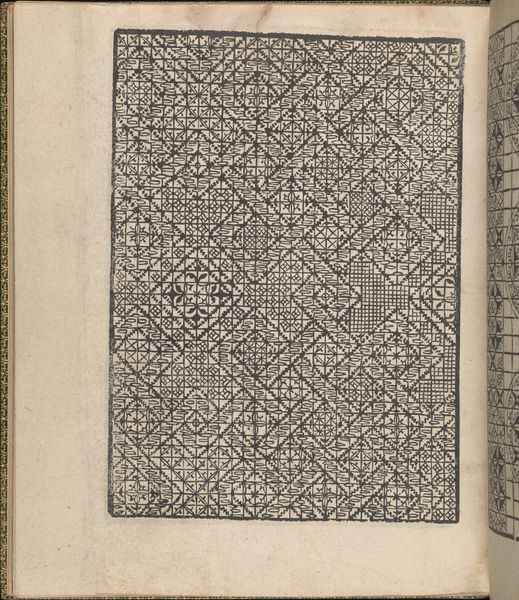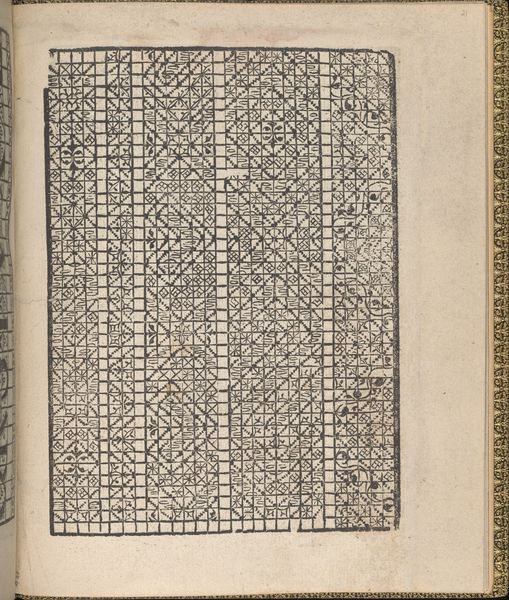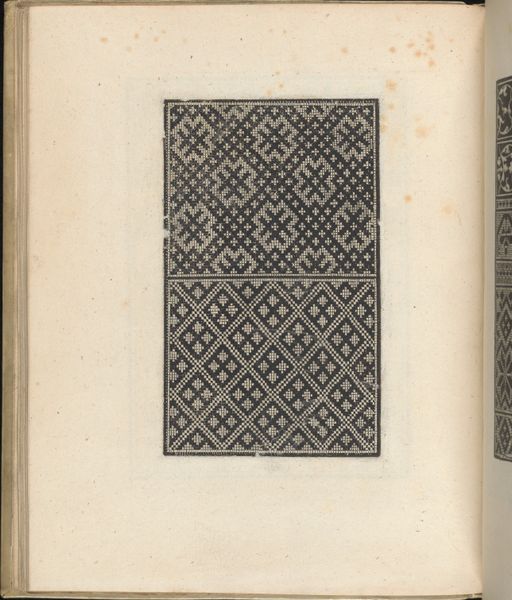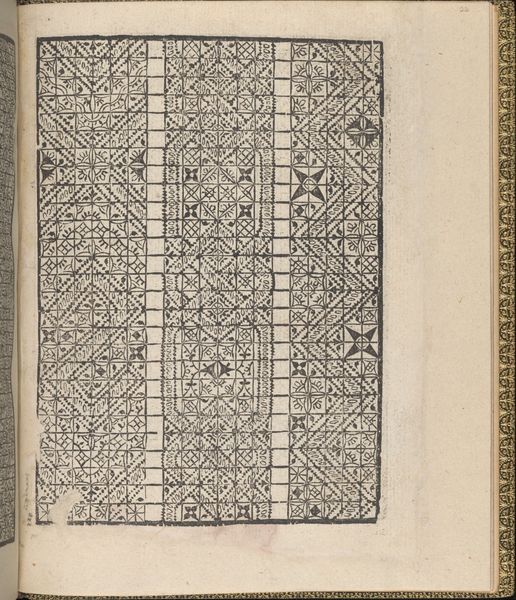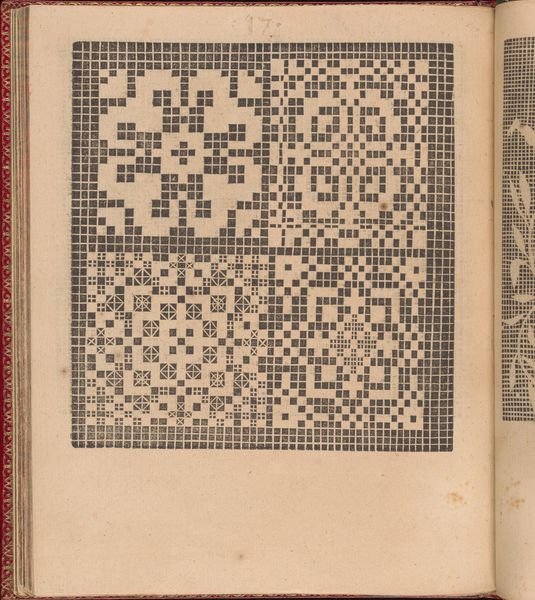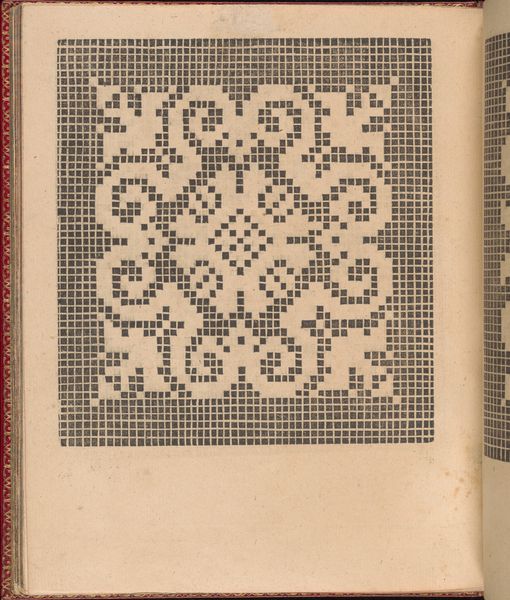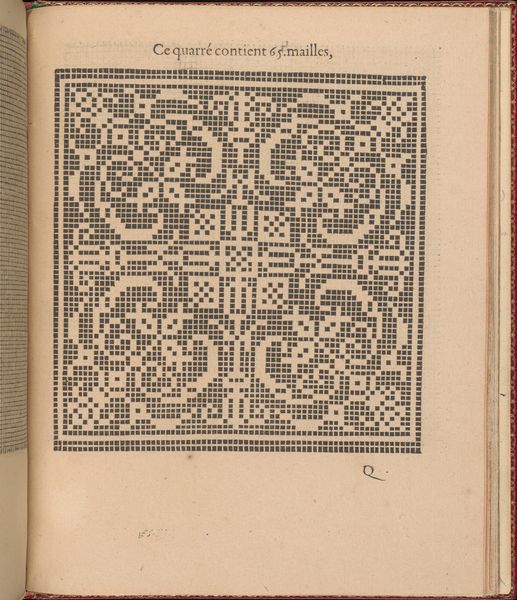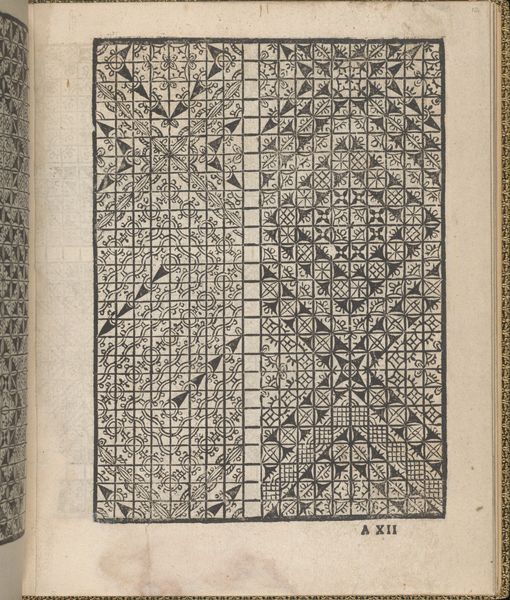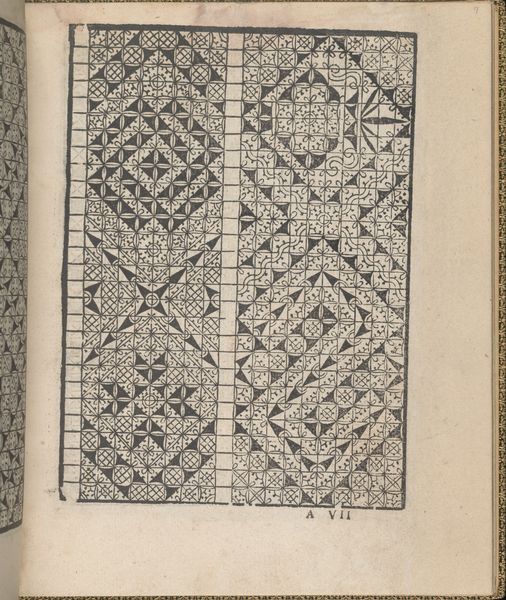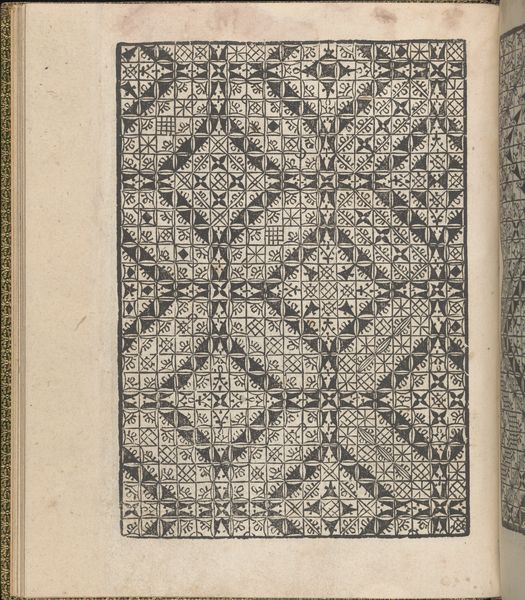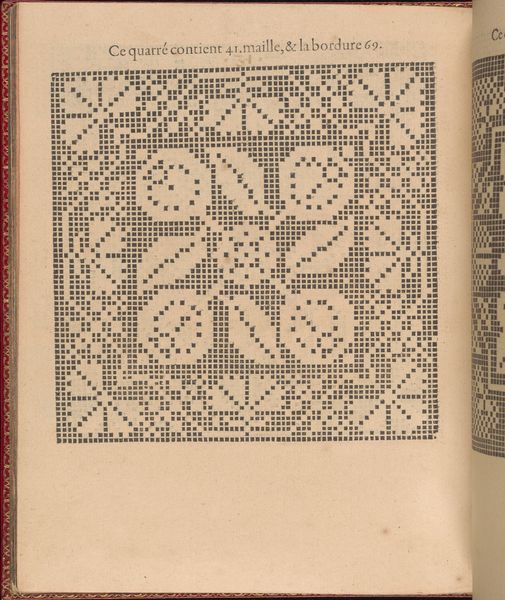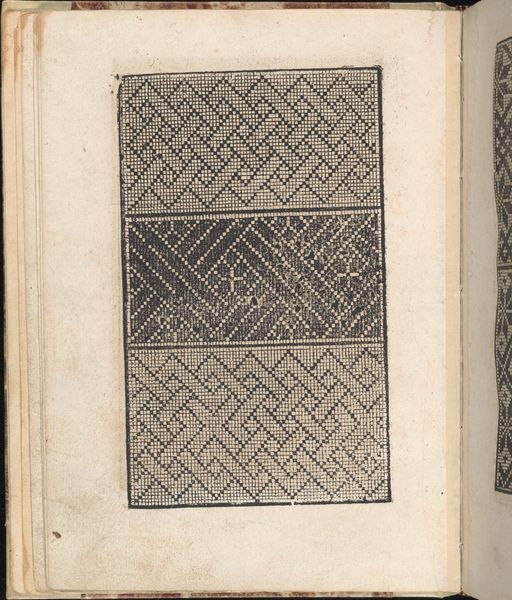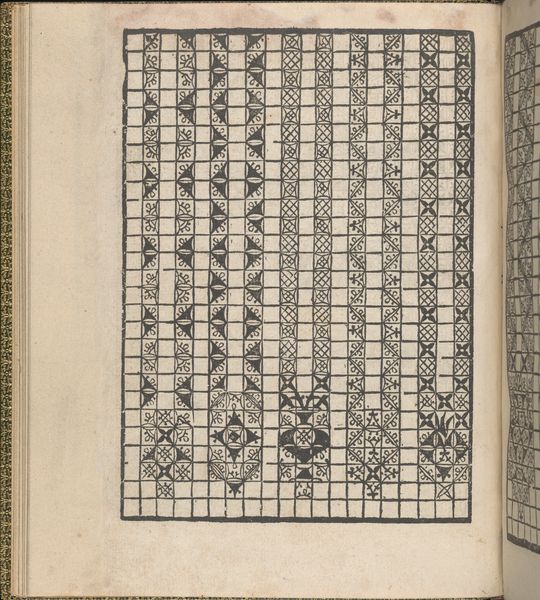
Giardineto novo di punti tagliati et gropposi per exercitio & ornamento delle donne (Venice 1554), page 22 (verso) 1554
0:00
0:00
drawing, ornament, print, woodcut
#
drawing
#
aged paper
#
ornament
#
toned paper
#
homemade paper
#
ink paper printed
# print
#
book
#
sketch book
#
hand drawn type
#
personal sketchbook
#
woodcut
#
men
#
line
#
pen work
#
sketchbook drawing
#
sketchbook art
Dimensions: 7-5/8 x 6-3/8 x 1/4 in. (19.4 x 16.2 x 0.6 cm)
Copyright: Public Domain
Curator: The Metropolitan Museum of Art holds this fascinating page from “Giardineto novo di punti tagliati et gropposi,” printed in Venice in 1554. It's attributed to Matteo Pagano. Editor: My first thought is just how intricate it is. All those tiny squares, filled with different patterns. It reminds me of needlepoint. Curator: That's perceptive. This wasn't meant to hang on a wall but rather was a pattern book. “Giardineto novo,” meaning “new little garden,” showcases designs for lace making and embroidery. It served as a crucial resource for women of the time. Editor: So it’s a manual. The material reality of the book then would be crucial, isn't it? It's designed for practical use, the size, the paper stock – likely cheaper to allow for mass production and therefore greater access to these designs. Curator: Absolutely. Consider the societal role too. Books like this gave women control over their creative output and maybe a way to enter into trade as skilled embroiderers and lace makers. The availability of this knowledge could impact social mobility in Venice at the time. Editor: It makes you think about the labour involved – the original artist devising the pattern, the engraver meticulously translating that into woodcut, the printer… and finally the lacemaker themselves, turning these flat patterns into tangible three-dimensional objects. A real collaborative process, spread across different skillsets and likely different social classes. Curator: That also speaks to the democratization of art in the 16th century, the advent of printing technology played a huge role in. The proliferation of images like this impacted social norms. Editor: I agree; this isn’t just a pattern. It speaks volumes about production, material culture, and the crucial, often unseen, labour of women. Curator: Precisely, by investigating these pieces, it allows us to glimpse into early modern society. Editor: And reminds us of the many hands, quite literally, involved in the making of even the simplest designs.
Comments
No comments
Be the first to comment and join the conversation on the ultimate creative platform.
